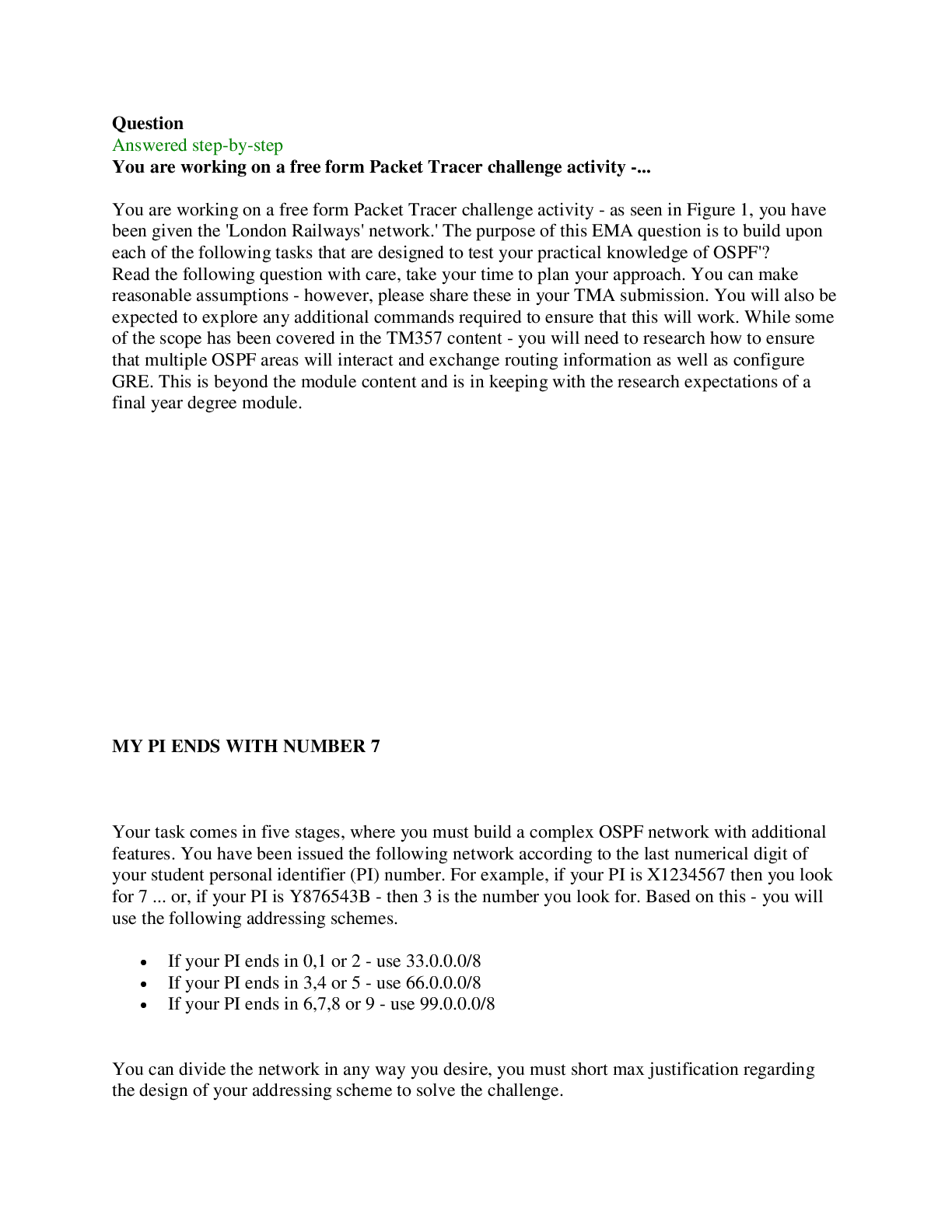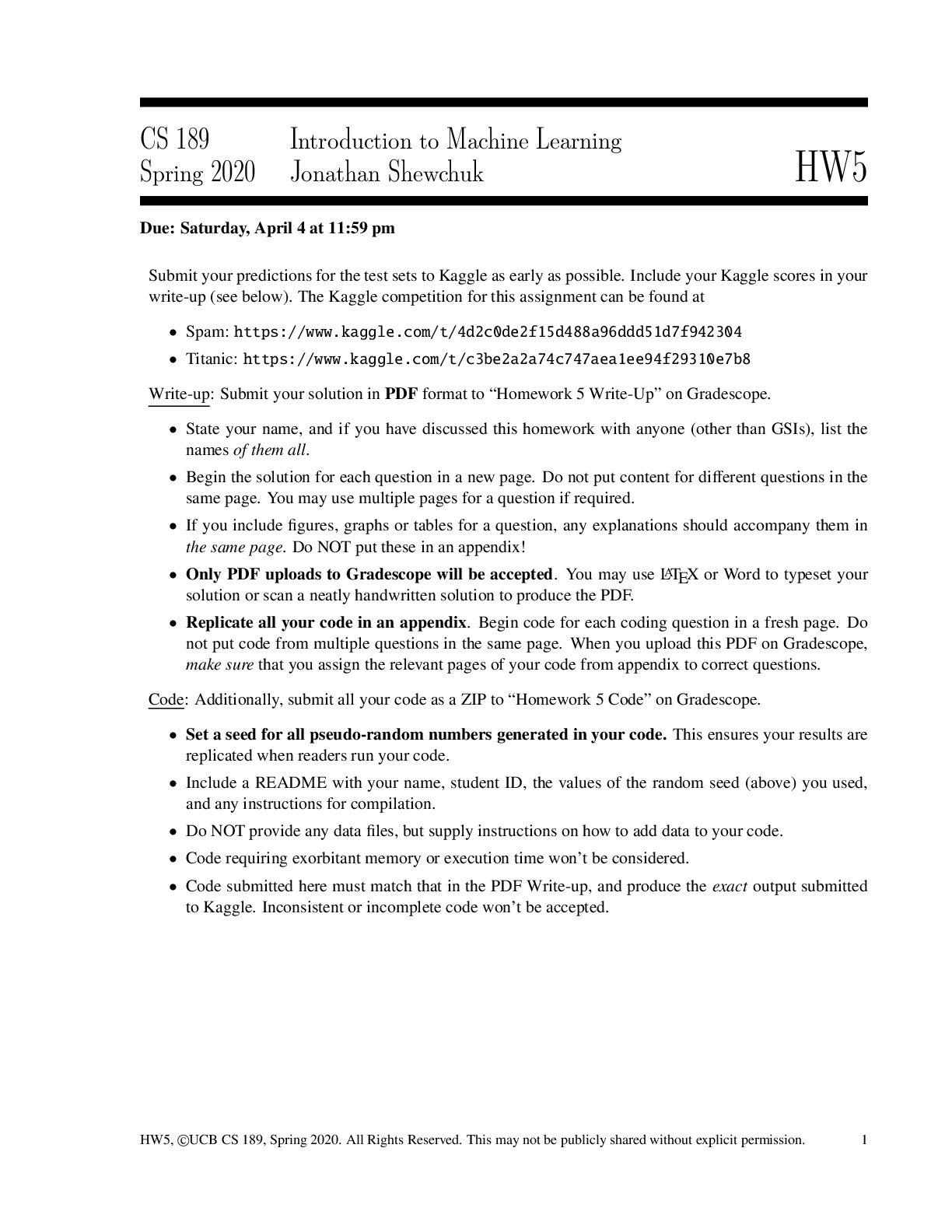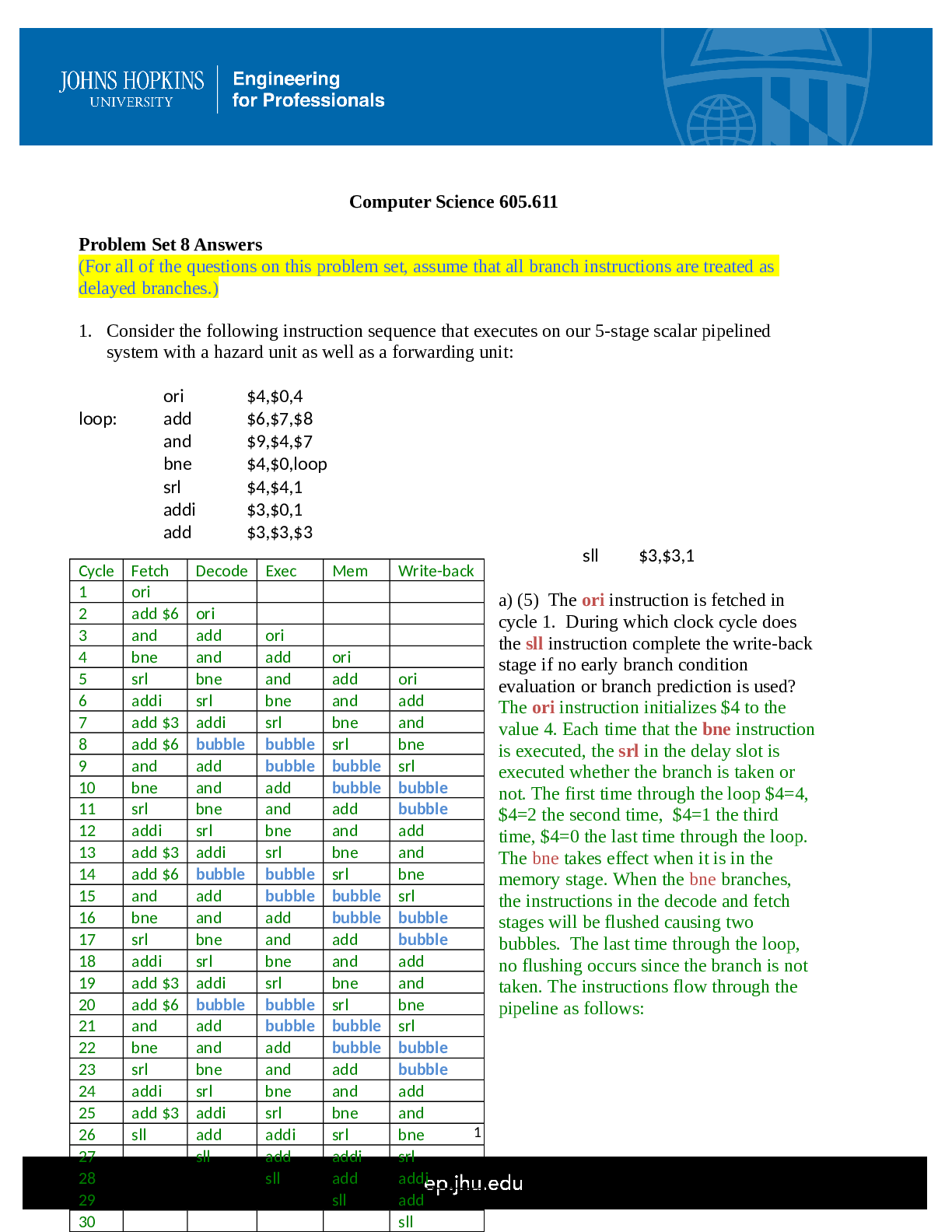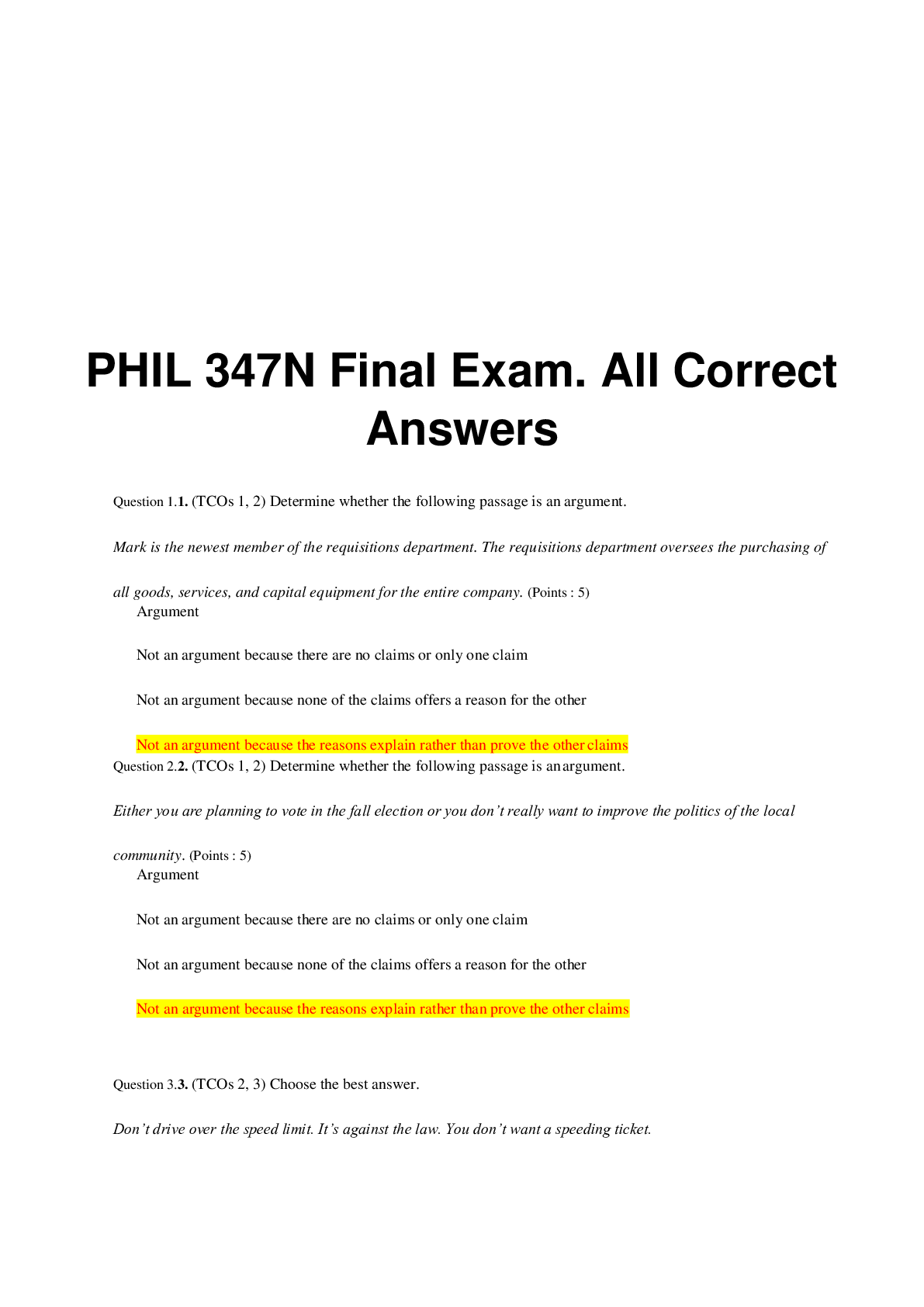History > QUESTIONS & ANSWERS > questionnaires 2020 (All)
questionnaires 2020
Document Content and Description Below
Questions the whole class - Hayes-Bautista: Latino Terminology: Conceptual Bases for Standardized Terminology 1) According to Hayes-Bautista, what is the one thing shared by all Latinos in the Unite... d States? The only element shared by all Latinos in the United States is political: the presence of United States foreign policy as pronounced in the Monroe Doctrine in 1823 2) What is the “Monroe Doctrine” and how did it affect US relations with Latin America? The Monroe Doctrine is the refusal to tolerate any further extension of European domination in the Americas and with its help Latinos were identified as a race apart. The political relation between the US and Latin America has colored US domestic policy toward its populations of Latin American origin. 3) What do the ideas in the Manifest Destiny have to do with Race? The annexation of other people, and the incorporation of foreign territories were bound up in a process by which a national identification was supplanted by a racial one—one in which the conquered race was relegated to a lower social class level than that of the conquering race. The idea of Manifest Destiny, which gave U.S. power in the Western Hemisphere and supported U.S. expansion westward, was built on a belief in white racial superiority and a sense of American cultural superiority, and helped to shape the era's political debates 4) Why did the United States confuse races and nationality in regards to Latin America? The United States confused races and nationality in regard to Latin America because of their origin in a Latin American country. The major conceptual basis, historically used for the identification of Latinos, has been political and geographic. This basis was pronounced in the Monroe Doctrine in 1823 and continues to the present. The use of this basis has resulted in the identification of the nationality of individuals from countries in Latin America. However, it was and continues to be confused with a racial categorization, purporting to identify a racially distinct group.5) What does the term “Hispanic” mean, and when did it start to be used? The term “Hispanic” was described as: "A person of Mexican, Puerto Rican, Cuban, Central or South America or other Spanish culture or origin, regardless of race." This is a new category that was created by executive fiat in the 1970s. 6) Why is “Latino” a better term than “Hispanic”? After an investigative reporting by the Los Angeles Times among the Mexican and nonMexican Latino population in Southern California it was determined that most Latinos rejected the term “Hispanic.” 7) What is the trait that most Latinos in US accept to have in common? The finding by the Times was that most respondents viewed "Latino" to be an adequate, appropriate, and acceptable self-description that expressed to their own satisfaction their desire to maintain a sense of national origin, while yet expressing links between them. As a result of this effort, the Los Angeles Times Style Guide states that: • Latino is the preferred umbrella term for all Spanish- surnamed groups in the United States. 8) Who is included by the term Latino and who is not included? Latino refers to geography, to the various countries in the Western Hemisphere . Specifically, to Latin America, to people from the Caribbean (Puerto Rico, Cuba, Dominican Republic), South America (Ecuador, Bolivia, Colombia, Peru, etc.) and Central America (Honduras, Costa Rica, etc.) Non-Latinos are Whites, African Americans, Asian. -Juan Gonzalez: The Role of the Church 1) How did the Crown and the Church consider the colonization and conversion of Natives? In Spain, both Crown and the Church saw colonizing and conversion as a unified effort. Priests accompanied each military expedition for the purpose of Christianizing the natives. 2) How do British and Spanish differ in their methods of subjugation? As the Conquest proceeded, priests performed baptisms by the thousands. Before the holy water could dry on their foreheads, the Indian women were routinely grabbed as concubines by Spanish soldiers and settlers. The priests even performed occasional marriages between Spaniards and Indians. The first English colonies, by contrast, began as family settlements. They maintained strict separation from Indian communities, sometimes even bolstered by segregation laws. In North America, Indians rarely served as laborers for settlers or as household servants, and unmarried sexual unions between natives and whites were rare except for captives of war. 3) What were the views of the Puritans in regards to the Indians? New England Puritans segregated themselves from Indians. In 1643, sections of Harvard College were built with money raised by the New England Company among Anglicans back home. While donors were told the funds would be used for Indian education, some of the money ended up buying guns and ammunition for the colonists. So minor was Puritan concern for the Indians’ souls. They used people’s compassion towards the Indians to fulfill their needs with that money [Show More]
Last updated: 2 years ago
Preview 1 out of 25 pages

Buy this document to get the full access instantly
Instant Download Access after purchase
Buy NowInstant download
We Accept:

Reviews( 0 )
$7.00
Can't find what you want? Try our AI powered Search
Document information
Connected school, study & course
About the document
Uploaded On
Sep 08, 2022
Number of pages
25
Written in
Additional information
This document has been written for:
Uploaded
Sep 08, 2022
Downloads
0
Views
50


























